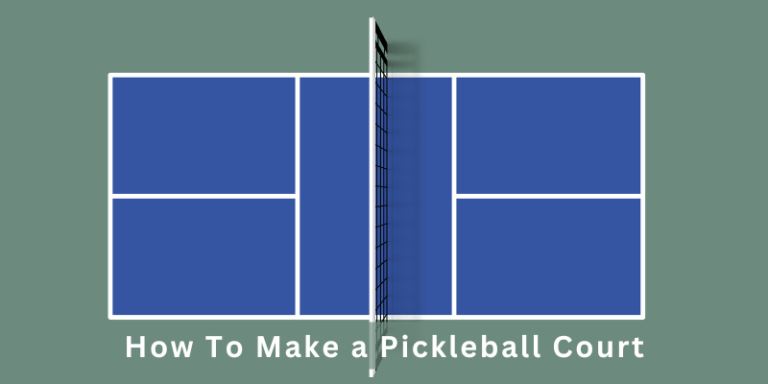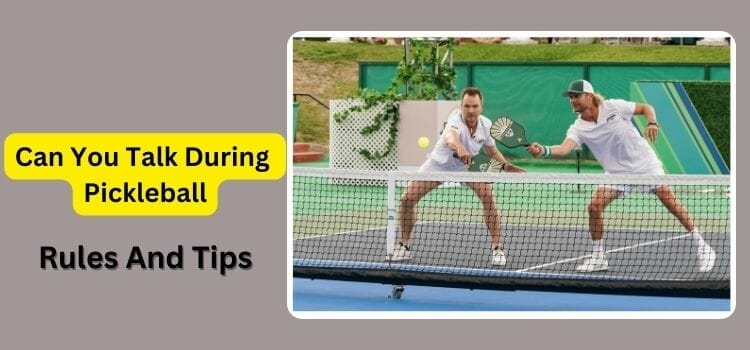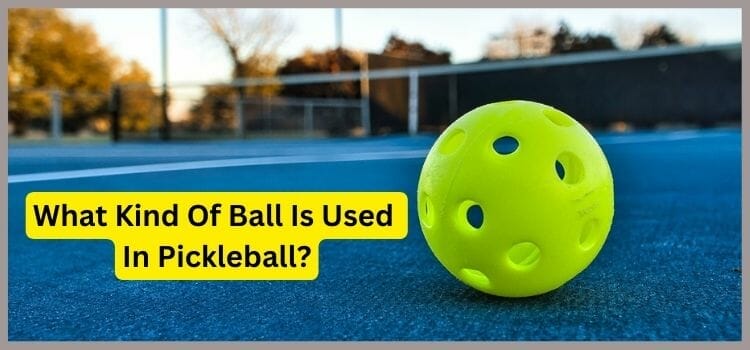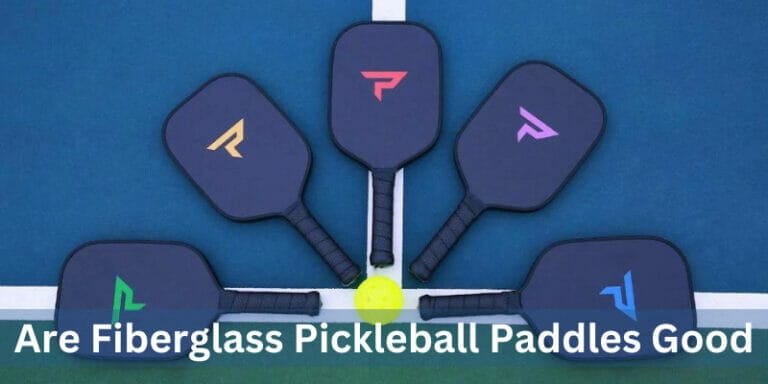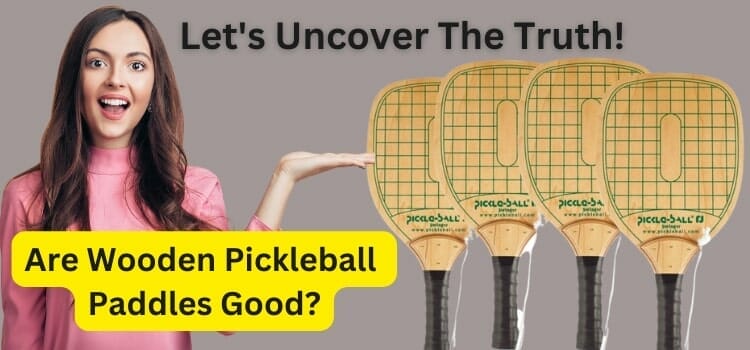Can You Play Pickleball On Concrete- Let’s Explore!
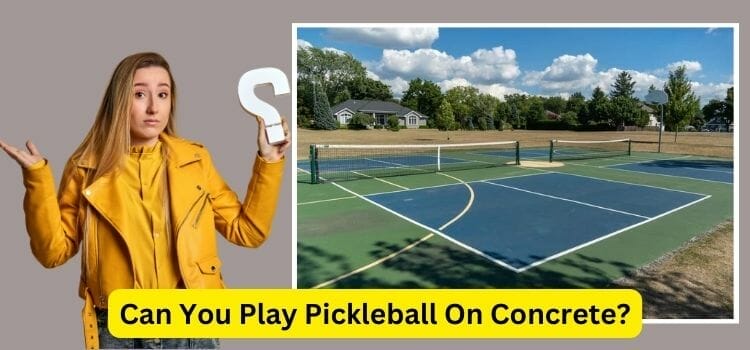
Calling all pickleball enthusiasts! Are you ready to dive into the world of this fast-paced and addictive sport? So one question on every player’s mind: Can You Play Pickleball On Concrete?
Absolutely, pickleball on concrete is a game-changing adventure that blends durability with strategy, inviting players to embrace the challenge and thrive on an unconventional court.
Whether you’re a seasoned pro or just starting out, understanding the different court options and their pros and cons is essential for taking your game to new heights. So grab your paddle and let’s get started on this concrete jungle adventure!
Can You Play Pickleball On Concrete-Unleash The Possibilities
Yes, you can absolutely play pickleball on concrete surfaces. Concrete courts, whether indoor or outdoor courts, provide a sturdy and accessible platform for pickleball enthusiasts to enjoy the game.
Concrete is a durable and level surface that can provide a good playing surface for pickleball. However, there are a few things to keep in mind if you plan to play pickleball on concrete.
- Concrete can be slippery when wet. Be sure to wear non-slip shoes if you plan to play pickleball on concrete in wet weather.
- Concrete can be hard on your joints. If you have any joint pain, you may want to consider playing pickleball on a softer surface, such as asphalt or grass.
- Concrete can be noisy. If you live in a close-knit neighborhood, be mindful of the noise level when playing pickleball on concrete.
Playing Pickleball On Concrete

Pros of Concrete Courts
Concrete courts present a series of enticing advantages:
- Longevity: Properly maintained concrete courts can have a long lifespan, providing a stable playing surface for years to come.
- Consistent Ball Bounce: The hard surface of concrete provides a reliable and predictable ball bounce during gameplay.
- Minimal Maintenance: Concrete courts require less maintenance compared to other pickleball court surfaces, saving time and effort.
- Accessibility: Concrete is widely available and can be easily converted into a pickleball court, making it accessible to players in various locations.
- Cost-Effective: Building a concrete court is often more budget-friendly than some other court surface options.
Cons of playing pickleball on concrete:
However, the concrete court adventure isn’t without its challenges:
- Surface Hardness: The hard nature of concrete can lead to more impactful falls, potentially increasing the risk of injuries.
- Unforgiving: Concrete courts do not offer the same level of shock absorption as softer surfaces, which could affect players who prefer a more forgiving surface.
- Weather Sensitivity: While concrete is durable and suitable for pickleball, extreme weather conditions, such as freezing temperatures, can lead to cracking and surface degradation over time.
- Lack of Traction: Concrete pickleball surfaces might not provide the same level of traction as other surfaces, potentially affecting player movement and agility.
- Less Comfort: Players might find playing on concrete to be less comfortable compared to surfaces with more cushioning and support.
Tips For Playing Pickleball On Concrete

1. Choose The Right Footwear
When playing on a concrete surface, it’s important to wear shoes that provide proper cushioning and support. Look for shoes with thick soles and good shock absorption to minimize the impact on your joints.
2. Warm Up Before You Play
Concrete can be hard on your body, so it’s crucial to warm up properly before stepping onto the court. Spend some time stretching and doing light exercises to get your muscles ready for action.
3. Modify Your Shots
On a concrete surface, the ball tends to bounce higher and faster than on other surfaces like grass or clay. Adjust your shots accordingly by using more topspin or hitting with slightly less power.
4. Be Mindful Of Your Movements
Concrete can be slippery, especially if it’s wet or dusty. Pay attention to your footwork and make sure you have good traction while moving around the court.
5. Use Softer Balls
To reduce the impact when playing on concrete, consider using softer pickleballs made of foam or other materials designed specifically for hard surfaces.
pickleball can be played on concrete may pose some challenges, but with these tips in mind, you can still enjoy a fun and competitive game!
The Role Of Maintenance
Proper maintenance is crucial when it comes to playing pickleball on concrete courts. Without regular upkeep, the playing surface can deteriorate quickly, affecting the overall experience and safety of players.
- Regular Cleaning: Regular cleaning is essential to remove dirt, debris, and dust that can accumulate on the court surface, affecting playability.
- Crack Repair: Cracks in the concrete should be promptly repaired to prevent them from worsening and compromising the court’s integrity.
- Sealing the Surface: Applying a protective sealant helps extend the life of the concrete court by preventing water penetration, reducing cracks, and enhancing durability.
- Line Repainting: Keeping court lines well-defined through periodic repainting ensures accurate gameplay and adherence to official court dimensions.
Consistent attention to maintenance will help extend the lifespan of your concrete pickleball court while providing an enjoyable playing experience for all who step onto it.
Conclusion
Playing pickleball on concrete can be a viable option, both indoors and outdoors. While outdoor concrete courts are more commonly used due to their availability and cost-effectiveness, indoor concrete courts provide a smoother playing surface.
It is important to note that playing pickleball on raw concrete can have its drawbacks. The hard surface of the concrete can cause an increased impact on joints and lead to injuries if proper precautions aren’t taken.
While playing pickleball on raw concrete comes with its own set of challenges, taking necessary precautions and ensuring proper maintenance can make it an enjoyable experience for players at all skill levels. So go ahead, grab your paddle, find a suitable location with a well-maintained concrete court, and enjoy a fun game of pickleball!
FAQS
Does pickleball work on concrete?
Certainly, both concrete and asphalt surfaces can serve as excellent foundations for pickleball courts. Prior to installation, it’s crucial to adhere to surfacing guidelines that encompass factors such as slope, drainage, and surface finish.
What is the best flooring for pickleball?
The optimal flooring for pickleball often depends on player preferences and court specifications. Surfaces like polyurethane on concrete or asphalt are popular choices, providing a blend of durability, comfort, and consistent gameplay.
Is sealing a concrete pickleball court necessary?
Sealing a concrete court is not strictly necessary, but it can help extend the court’s lifespan, enhance playing conditions, and make maintenance easier.
References
https://www.paddle2racket.com/post/can-pickleball-be-played-on-concrete
https://www.ballsportspro.com/can-you-play-pickleball-on-concrete/
https://picklevine.com/can-pickleball-be-played-on-concrete/

